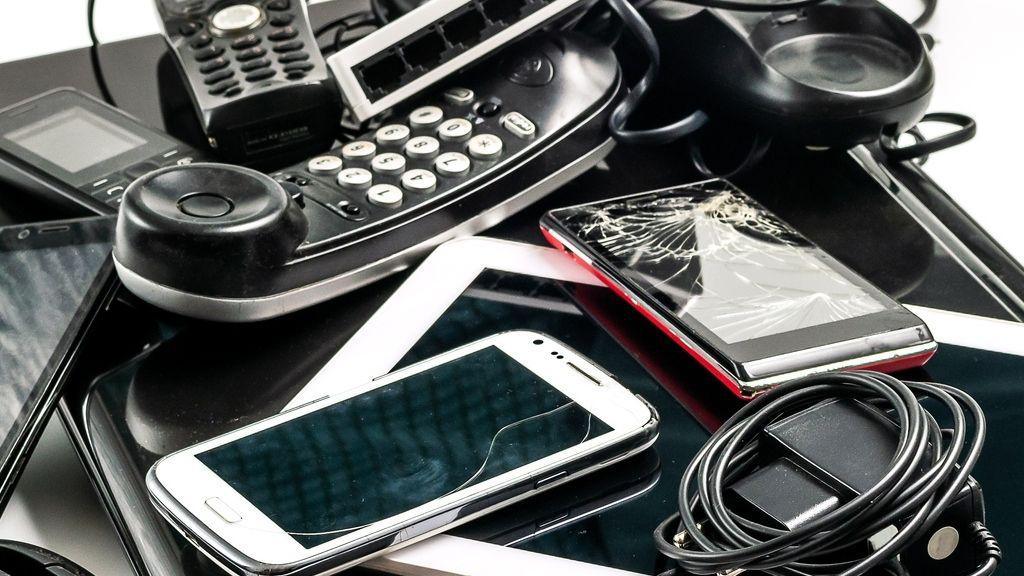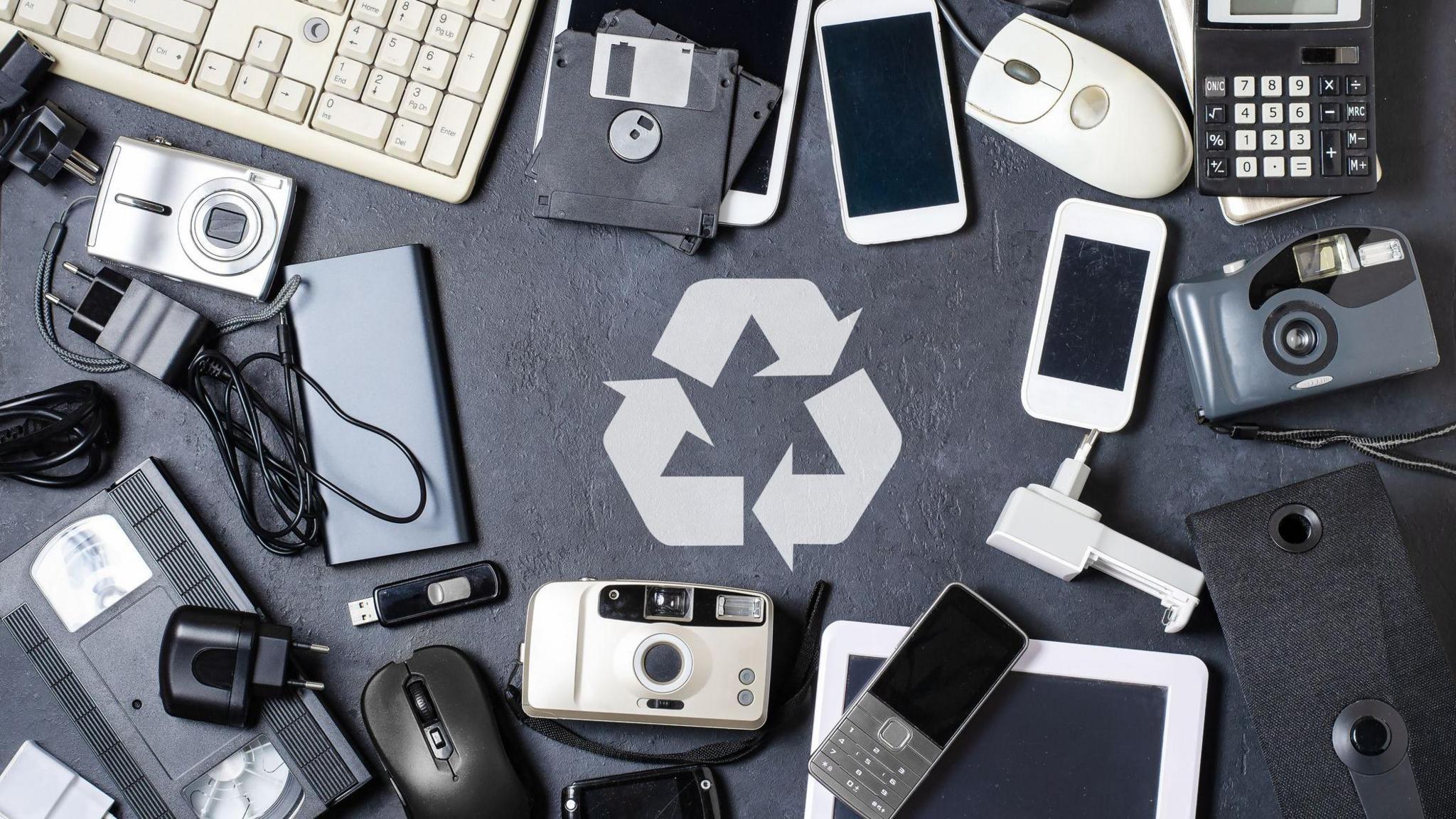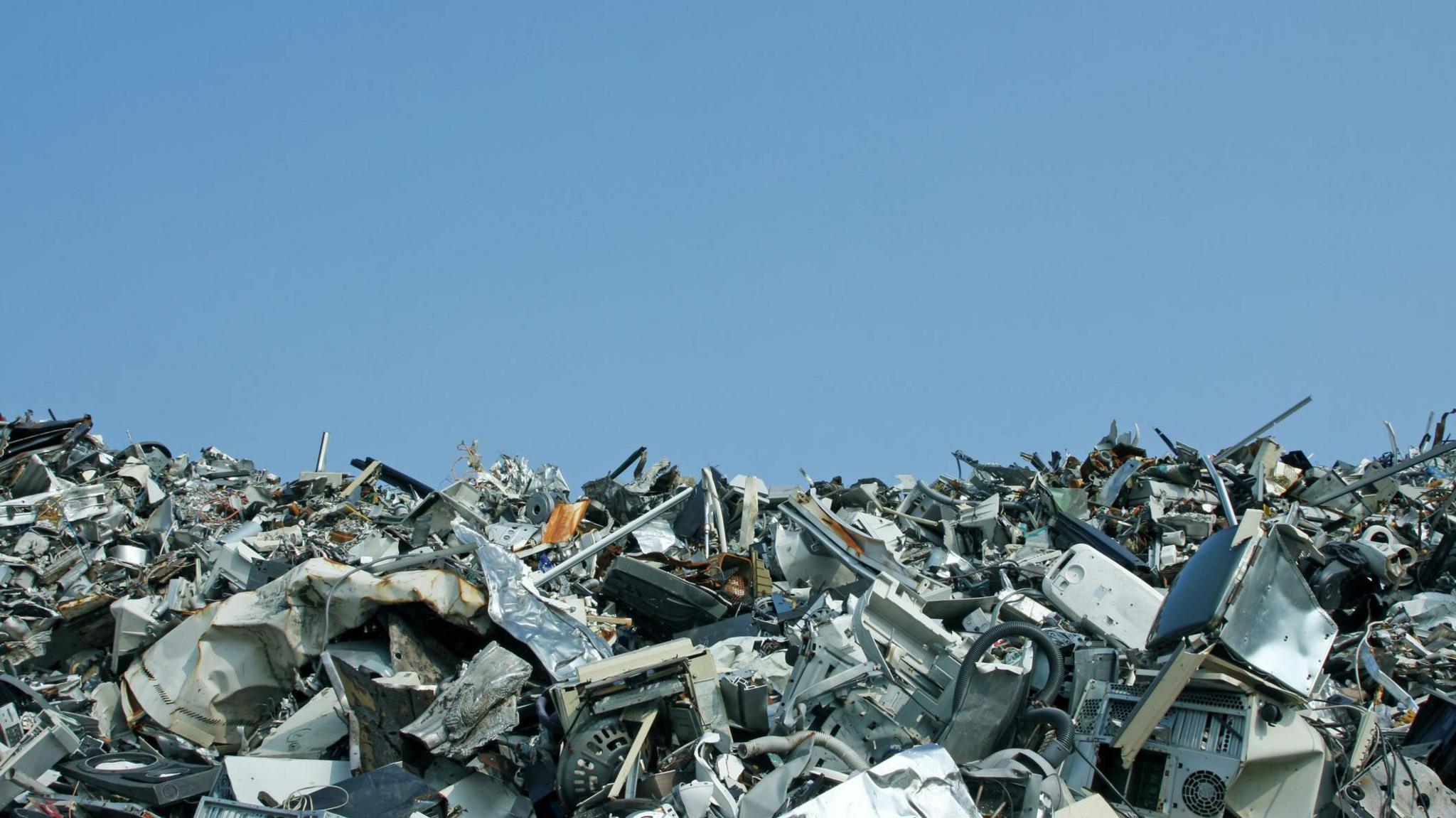Report finds record levels of electronic waste around the world

- Published
Many of us own and use electronic tech such as mobile phones and tablet computers on a daily basis - but have you ever thought about what happens when you don't need them anymore?
Whilst a lot of people choose to give items away second-hand, or sell their old gadgets, sometimes these devices end up being thrown away.
A new report from the United Nations has found that record amounts of electronic waste - or e-waste for short - are being produced around the world.
Sixty two billion kilograms of e-waste was generated globally in 2022, with less than a quarter of it collected and recycled in an environmentally friendly way.
More like this
What do you do with your old tech?
- Published3 April 2024
Barbie phones, transparent laptops and more top tech
- Published27 February 2024
How old phones are being turned into gold
- Published22 March 2022
What did the report find?

The UN's Global E-waste Monitor looks at waste and recycling levels across the world.
In their latest report they found that in the past 12 years, the amount of e-waste produced globally has nearly doubled from 34 billion kilograms to a record 62 billion kgs in 2022.
That amount is about 200 times as heavy as the famous Empire State skyscraper in New York City.
They also say that the collection and recycling rate has increased as well, growing from 8 billion kgs to 13.8 billion kgs over the same time period.
However, this means that the overall levels of e-waste are still five times higher than the materials that are getting recycled.
The report says that Europe has the highest levels of e-waste and immediate action is needed by all countries to do more - especially for wealthier nations to support poorer nations in helping them to set up proper e-waste collection and recycling facilities.
Why is e-waste a problem?

When old electronic devices are thrown away in general waste, they can end up in landfill and buried in the ground.
This can lead to harmful chemicals leaking out from the metals inside the device.
When these chemicals leak out, they can damage the nearby environment for plants and animals.
